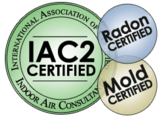In Park City Utah, highway noise has been a hot topic recently for homeowners along I-80 in Summit County, Utah. From a recent Park Record article, “As part of the work being done along that stretch of the interstate, UDOT also plans to begin construction on a controversial noise barrier along the length of the climbing lane. It will be the first of its kind in Summit County and follows a heated community debate during the planning phase of the barrier last year.”
Sometimes noise is something homebuyers tolerate given the specific location of a home they are considering purchasing. A prospective home could be near a highway or common airline route. Highway noise and airplane noise are sometimes unpreventable given the location of a home, but there are many strategies a homeowner can use to migrate noise in a new home.
Noise Mitigation
by Nick Gromicko
Source: https://www.nachi.org/noise-mitigation.htm
Just as excess light can harm our eyes and odors can be noxious, there are plenty of noises in the average home that can create discomfort for occupants. Inspectors may offer their clients suggestions about how to reduce unwanted noise.
Why is excess noise an issue for building occupants?
It can lead to:
Occupants of houses situated beneath flight paths may find the sound unbearable
- increased levels of stress;
- lack of sleep;
- compromised privacy;
- hearing loss; and
- distraction and reduced worker efficiency in work environments.
Where does nuisance sound come from? Some sources include:
- transportation noise, such as that from highways, trains and aircraft;
- neighborhood noise, such as that from parties, barking dogs, leaf blowers and other motorized equipment;
- interior human activity, such as footsteps, conversations, and sounds from music rooms and home theaters; and
- interior mechanical activity, such as water pipes, dishwashers and heaters.
Facts About Sound in Structures
Due to its stiffness, wood is a very poor insulator of sound. Concrete houses are significantly quieter than their wooden counterparts.
The hardest sounds to block are low-frequency sounds, such as the thumping of a stereo bass.
Sounds are measured in decibels (dB) on a logarithmic scale in which a sound increase of 10 dB indicates a tenfold increase in intensity, although the subjective experience of two sounds separated by 10 dB is somewhat less drastic. A 120 dB train would thus be 100 billion times more intense than the quiet rustling of leaves in the distance (10 dB). Constant exposure to sounds of 85 dB or greater can cause permanent hearing damage.
Loudness of Typical Activities
| Activity | Intensity in Decibels (dB) |
| jet aircraft, 50 meters away | 140 |
| train | 120 |
| chainsaw, 1 meter away | 110 |
| car horn | 100 |
| diesel truck, 10 meters away | 90 |
| busy street | 60 to 70 |
| average home | 50 |
| normal conversation | 30 to 50 |
General Principles of Sound Mitigation
The following four strategies can be used to reduce the transmission of sound:
- Add mass. Increase the mass of the wall or floor by using heavy, dense materials. Very massive, non-rigid materials, such as lead or sand, are ideal, but doubling or tripling the drywall is also helpful.
- Absorb sound. Insert soundproofing material, such as fiberglass batts, into a cavity.
- Decouple structural elements. Interrupt the path of vibration by separating framing.
- Seal gaps and cracks to prevent sound from leaking.
Specific Strategies for Reducing Sound Transmission in Homes and Commercial Buildings
Add Components:
- Add soft materials, such as carpets, couches and other soft furniture. Sound will reverberate off of hard surfaces, especially wood floors, walls and desks.
- Add soundproof panels. These panels are usually made of foam and resemble an egg crate, but they are available in other materials and configurations as well.
Ducts
- Use ductboard or duct liners made from fiberglass to quiet the noises of fans and moving air.
- Avoid sharing a duct between two rooms that require sound privacy. Conversations can easily travel through ducts.
- Insulate the ductwork’s interior in order to prevent the transmission of HVAC equipment sounds throughout a building.
Windows:
- Replace single-pane windows with double-pane windows, which achieve better sound-damping. This property is partly due to the superior seals on double-pane windows. Also, the air gap between the panes serves to trap unwanted sound.
Piping
- Isolate piping from areas that require privacy, such as bedrooms.
- Create air chambers to eliminate the “hammering” noise that is sometimes created when water is turned on or off by isolating piping from framing and drywall.
- Use oversized supply and drain pipes to reduce pressure and minimize flow noise.
- Insulate all plumbing chase walls.
- Replace plastic pipe with cast-iron water lines to substantially reduce plumbing noise. Iron, which is more massive than lightweight piping alternatives, provides superior sound protection against water sloshing through pipes. Pipes may also be sealed with foam as a less effective noise-reduction strategy.
Quiet Appliances
- Where appliances vibrate, provide vibration insulators.A white noise generator, such as this one, can be used to make private conversations unintelligible
- Caulk around fixtures and piping penetrations.
- Get a new dishwasher. Many newer dishwashers have quieter motors and offer better sound insulation than older models. Whirlpool, for instance, has a line of “Quiet Partner” dishwashers, which the company claims are quieter than popcorn popping or an electric razor. Jenn-Air also offers a series of quieter dishwashers.
- Buy a fountain. Indoor and outdoor fountains and waterfalls have become popular, lending some serenity-inducing elements to home life. These can be used to squelch irritating noises, such as a nearby construction site, or to make private conversations less intelligible.
- Buy a white noise generator. Where an extra layer of privacy is required (such as at medical offices), white noise generators may be used. These devices produce a sound composed of a blend of all audible frequencies distributed equally. Nearby conversation and other sounds become less intelligible or even less noticeable. Be sure to not set the volume too high or the white noise generator may itself become a source of nuisance noise.
Suggestions for Clients with Noisy Neighbors
Obtain a copy of the noise ordinances in your community from your local police department, city hall or public library. Most jurisdictions have outlined specific criteria explaining the particular hours during which noise may not exceed a certain level. Once you have obtained a copy of the ordinance and determined that your neighbor has violated it, write them a polite, matter-of-fact letter explaining that you will have to call the police if they do not rectify the problem. Include a copy of your city’s noise law and keep a copy of the letter for your own records. At this point, most neighbors will agree to compromise, as noise laws usually impose stiff fines.
In summary, there are many ways to reduce the transmission of unwanted sounds throughout a home and commercial building.

